
Although new college graduates looking to enter the workforce and employers hiring these graduates agree on which competencies are most important for job candidates to hone, their perception of student proficiency in them differs.

The Yale Office of Career Strategy enlisted the help of key partners to create an assessment tool that incorporates design-thinking principles and is available to everyone, not just Yale students and alums.
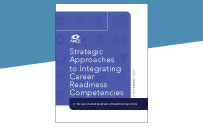
Strategic Approaches to Integrating Career Readiness Competencies, developed by the NACE Career Integration Task Force, identifies strategies and practices for integrating career readiness skills and competencies institution-wide and examines how career readiness informs skills-based hiring. The publication also identifies further areas for research.

New college graduates embrace the value of higher education, with 91% reporting that, if they had a chance to do it again, they would opt to pursue a college education.

To make McPherson College students aware of the skills they are developing during their campus jobs, Amy Beckman incorporated career readiness competencies into student job descriptions and supervision.

The University of California, San Diego Career Center developed the Triton Career Readiness Passport to help students launch a personal career journey by answering a simple question: Why?

Getting faculty buy in, having liaisons in different departments, and having the faculty be program champions was the key to the success of Georgia State’s “College to Career” career readiness initiative.

While moving to a virtual world and with little experience using virtual tools, William & Mary career center staff connected students and alumni by creating the Professional Development Academy.

CUNY SPS recognized that certain curricula could better communicate to students how their courses address career competencies and the significance of the competencies in achieving career success.

BYU works to help students understand that they have these transferable skills and competencies that can be used in a variety of ways in a variety of situations.

Mohawk Industries believes it has a responsibility to do what it can to support the transition of students to the workplace, which is just one of the reasons its ASPIRE program is so important.

To prepare students for their transition to the workforce, career centers have to account for the standards of professionalism shifting over the past several years.
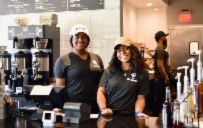
Through its Experiential Learning Platform™, Saxbys builds individualized academic partnerships to open cafes that provide exceptional paid experiential learning opportunities for students.

The University of Redlands’ Career Faculty Fellows Program was launched in 2019 to help the institution scale career services and embed career preparedness more intentionally into the curriculum.

When it comes to the development of college students’ career readiness, industry should be complementary to and support career services professionals and faculty, explain Liz Moran and Lynn Letukas of SAS.

Skill development and early engagement are key priorities of New York University’s (NYU’s) Wasserman Center for Career Development. It addressed both of these priorities by developing a program that embedded career readiness competencies in a course for first-year students.

There has been a shift in the requirements of the labor market. Twenty-first century careers demand executive-functioning mindsets and tactical and relational skills, says Allison McWilliams, Ph.D.

A study of computer science and engineering students at the University of Georgia examines their experiences with and perceptions of work-related experiential activities.

Launched in 2018 with a flagship two-day immersive conference, Workday’s “Future Females in Tech Engagement Program” helps women to build career confidence and make the connections they need to get started in the tech industry.

The UC Berkeley Career Center’s annual transfer student career summit is a five-hour virtual event that was created to help connect transfer students, who are often overwhelmed when navigating career opportunities, and employers that are not aware of the value transfer students can bring to organizations.

New to the repository is “Curated Resources for Teaching and Assessing Career Readiness Competencies,” a compendium developed through a grassroots effort by NACE members. Access this and other resources at www.naceweb.org/career-readiness/resources/ .

Employers play an important role in ensuring that college students are career ready and in developing the competencies that broadly prepare college graduates for this transition. “It’s a role that requires employer engagement with both students and college leadership,” explains Glen Fowler, a past president of NACE and, until his recent retirement, the recruiting and training manager for the California State Auditor’s office.

Career success means a commitment to lifelong learning to add skills and credentials that employers need. The adaptive innovator—or T-professional—does just that.
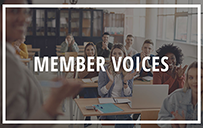
Colleges must work to ensure that students are aware that skills they’re using and developing in the classroom can be an asset after entering the workforce.

Through its University Professional Internship and Co-op Program, Clemson University provides 1,000 students a year with the opportunity to gain experience, defray expenses, and build career readiness competencies.

NACE looks at how two universities brought career readiness competencies to their campus.

The key competencies employers want in the students they hire for internships are also among the skills employers help their interns to develop.

When it comes to selecting students for their internship and co-op programs, employers have a set of five competencies that are “must haves.

What is the difference between the NACE Principles and Professional Standards? And how do both differ from the Competencies?

NACE provides ethical principles, professional standards, and professional competencies. What is the difference?

NACE research suggests that internship and study-abroad experiences have a positive effect on the career readiness of first-generation students

Students feel that their experiential education assignments have a positive impact on their career readiness competencies.

The authors explore soft-skill development through internships.

The authors look at the similarities and differences in how college students and employers describe leadership and its various proficiency levels.

LIM College has a unique career education structure that is based on the NACE Competencies and that will allow the college to conduct longitudinal research.

Employers have consistently identified the four career readiness competencies that they find essential in their new college hires.

Peck and Preston advance the Cocurricular Career Connections (C3) Leadership Model, designed to connect higher education and business and industry.

When it comes to rating the “career readiness” of college graduates, there are differences in perception between students and employers.

While employers rate critical thinking/problem solving as the most essential competency for new hires, they rate their hires more proficient in other areas.

Employers that want to attract and retain the best employees should focus on engaged students.

When asked to rate the career readiness competencies of college graduates in terms of “essential need,” employers view four as vital, according to results of NACE’s Job Outlook 2016 Spring Update.

When asked to assess candidate skills/qualities, employers rated verbal communications skills the most important, according to NACE' s Job Outlook 2016 report.

A cross-functional team led by faculty integrated career readiness into the College of Liberal Arts at University of Minnesota-Twin Cities.

The NACE Center and SkillSurvey collaborated on a pilot project to determine how to best measure career readiness; results of the initial phase are highlighted.

Systemic reform centered on active learning is essential to cultivate career competencies.

In spring 2014, the National Association for Campus Activities (NACA) and NIRSA: Leaders in Collegiate Recreation launched a working group to look at how the soft skills gained through participation and employment in co-curricular experiences helped to prepare students for their careers. The goal was to identify ways that students are gaining skills that make them more desirable to employers by participating in programs in collegiate recreation and campus activities and by engaging in student employment in the fields of collegiate recreation and campus activities.

Using before and after assessments, career coaches at the University of Cincinnati analyze the outcomes of their course for undergraduate business students and identify future directions based on the data.
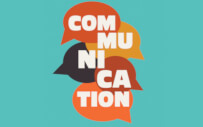
Research conducted by Aaron James and Troy Nunamaker, Clemson University, indicates that many students under- or overrate their communication skills, perhaps because they are assessing them in the context of an academic setting, not the workplace.

NACE has identified key behaviors that allow college students preparing to enter the workforce to demonstrate their career readiness to prospective employers.

Amy Morrill Bijeau and Beverly Peters, American University, examine whether students can gain career readiness competencies through virtual internships. Their study compared student self-assessments and supervisor evaluations from those taking part in virtual, in person, and hybrid internship experiences.
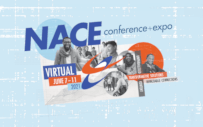
Over the course of the week-long NACE21 conference, it became clear that several topics—such as the new normal, professionalism, and career readiness—weighed most heavily on attendees.

Career services offices can help students develop their professionalism and navigate situations when “professional standards” may fuel and foster bias.

NACE members share resources they have developed to communicate with college students and others about how to develop key competencies, known as the NACE Career Readiness Competencies, needed to be considered ready for the workforce.

Career services offices should provide programming and resources to help boost students’ proficiency in critical thinking, communication, and professionalism.

Undergraduate research, scholarship, and creative inquiry experiences can help students build competencies in all eight NACE career readiness competencies.

One way to address career preparation is by ingraining it into the curriculum with the help of faculty champions.

Dr. Julia Overton-Healy of St. John Fisher College suggests career services offices need to recalibrate their understanding of who their students are and make changes to accommodate them.

Last fall, VCU began offering its Interdisciplinary Career Readiness Skills minor, an 18-credit pathway for students to develop today’s most highly sought-after job skills.

To prepare students for their transition to the workforce, career centers have to account for the standards of professionalism shifting over the past several years.

New graduates and their potential employers can agree on which skills are most important for job candidates, but differ on how proficient new graduates are in those abilities.

With an eye toward the future of its workforce, Mohawk Industries provides its candidates and new college hires with development that extends beyond the internship.